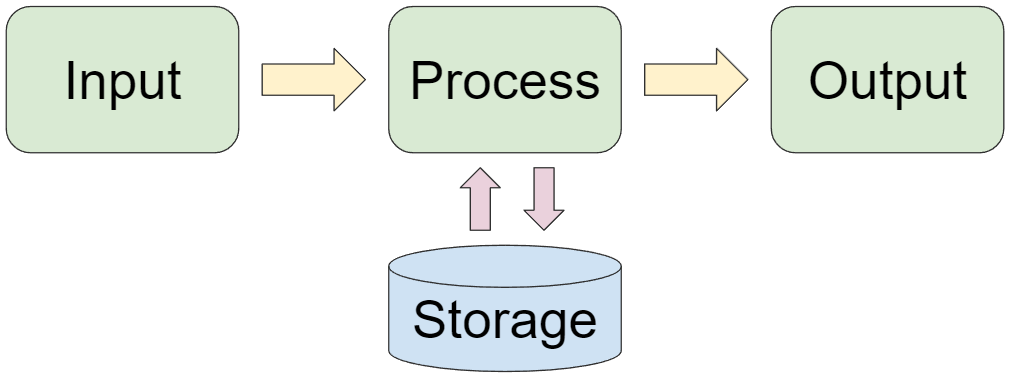Introduction
Introduction to Input, Process, Output Model
The Input, Process, Output (IPO) model is a conceptual framework used to understand and describe the flow of data within a system or process. It breaks down the system into three key components:
- Input
- Process
- Output
Here optional storage component has been added for clarity.
Input
Input Stage
- user keystrokes
- mouse clicks
- file / database contents
- input from other programs
- Sensors
- network packets.
Process
Process Stage
- perform calculations
- make decisions
- store data in memory
- call functions or subroutines,
- execute various operations to transform the input into a desired output.
Output Phase
Output Stage
Outputs are the results, outcomes, or responses generated by the system after processing the input data. They represent the transformed or processed information that is produced by the system. Outputs can be in soft copy or hard copy form and can take various forms, such as:
- reports
- notifications
- displays
- files
- actions triggered by the system.
Example
Example – Ecommerce Website
Consider an e-commerce website that follows the IPO model.
Input: A customer visits the website and provides their order details, including the items to purchase, quantity, and shipping address.
Process: The website’s backend system processes the order by validating the inputs, checking product availability, calculating the total cost, applying any discounts or promotions, and updating inventory records.
Output: The system generates an order confirmation page for the customer, displaying the total cost, estimated delivery date, and order reference number. Simultaneously, the system generates an order notification for the seller and updates the inventory database to reflect the reduced stock.
In this example, the inputs are the customer’s order details, the process involves validating and calculating the order, and the outputs include the confirmation page for the customer and the order notification for the seller.
Video
IPO Model Video
Resources
